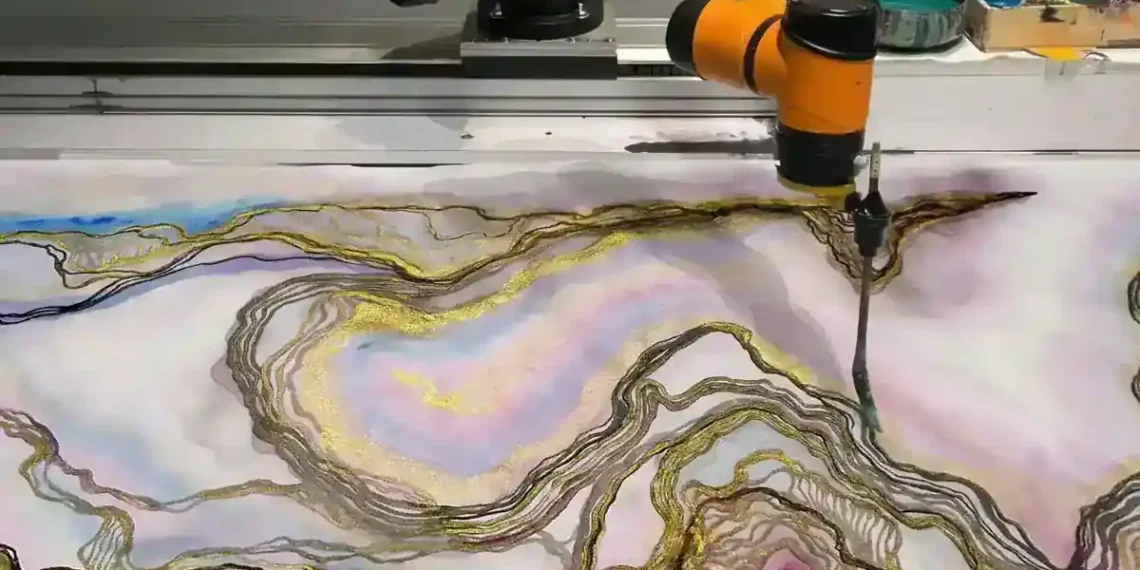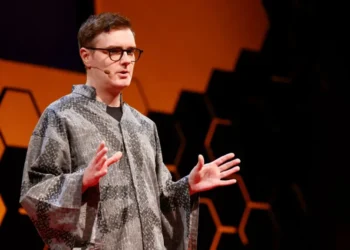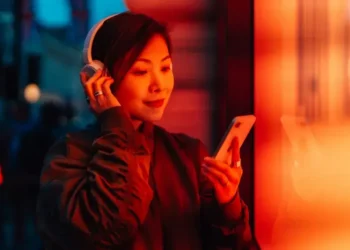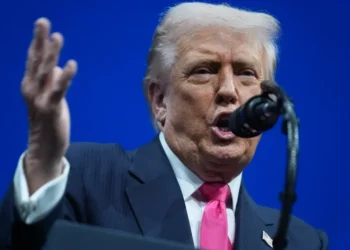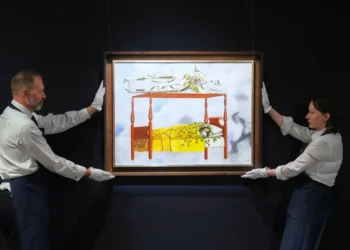This Robotic Arm is Revolutionizing Traditional Chinese Ink Painting
Back in 2018, Christie’s made headlines by auctioning off the first-ever artwork created by artificial intelligence (AI) — selling for a staggering $432,500. But for Hong Kong-based artist Victor Wong, that painting wasn’t exactly groundbreaking.
“It totally mimics human work,” Wong said. “It wasn’t something different.”
Wong, who holds a degree in electrical engineering and has a diverse background in movie special effects, art installations, and sculpture, wanted to push the boundaries. Instead of copying human art, he sought to create something truly unique.
Meet AI Gemini: The First AI Ink Landscape Painter
The result? AI Gemini — an AI-driven robotic arm that creates traditional Chinese landscape paintings, marking what 3812 Gallery calls the world’s first “artificial intelligence ink artist.” (No relation to Google’s chatbot of the same name.)
This robotic arm, bought online and reprogrammed by Wong, holds a paintbrush and paints on Xuan paper — the delicate rice paper long used for Chinese ink art. Wong’s custom algorithm processes data sets he selects, guiding the robotic arm to brush mountain contours, rivers, and valleys, forming serene landscapes.
For one series, inspired by China’s lunar rover mission to the far side of the moon, AI Gemini painted using data from NASA’s public 3D moon map. In other works, stock market fluctuations become mountains and valleys on the canvas, transforming abstract numbers into visual poetry.
Colors are applied through deep learning techniques trained in traditional ink painting, while humidity data controls the amount of water used for brush strokes. It takes roughly eight to 10 hours for AI Gemini to complete a one-meter-wide painting.
From Hong Kong to London: Bringing AI Ink Art to the World
Since launching AI Gemini, Wong has showcased his robotic painter in exhibitions across Hong Kong, Shanghai, Taipei, and London. His unique artworks have fetched around $20,000 each, with clients ranging from individual collectors to major corporations like Cathay Pacific.
Despite the ancient origins of Chinese ink landscape painting — which dates back thousands of years — Wong believes combining human creativity with AI technology can create “something that hasn’t been seen before.”
The Debate Over AI and Art
AI-generated art remains controversial. Earlier this year, over 6,500 people signed an open letter urging Christie’s to cancel a planned auction solely for AI-created artwork, citing concerns over originality and copyright. Yet the sale proceeded, bringing in $729,000.
Wong’s approach differs: instead of training AI to copy famous masterpieces, he programmed AI Gemini to replicate the technique and style of traditional masters — creating original pieces rather than duplicates.
Still, not everyone is convinced. Visitors to Wong’s exhibitions sometimes exclaim, “It’s not art!” But Wong welcomes the debate.
He notes other artists exploring robotics in art, like the humanoid robot Ai-Da, which paints based on AI prompts, and Sougwen Chung, who collaborates with robots on large canvases.
Innovation: The Heart of Art
For Wong, technology and art have always been intertwined. He points out that the paintbrush itself, a Chinese invention widespread since the Han dynasty (206 BC to 220 AD), was once a groundbreaking tool enabling calligraphy and painting.
Artists like Leonardo da Vinci also pushed artistic boundaries in the 15th century by using linear perspective — a mathematical method to create depth in art.
“The master always has a secret recipe to do their work,” Wong says. “They always use the latest technology at the time.”
Using AI in art is just the next step in that long tradition of innovation — an inevitable evolution.
“AI has become a part of life,” Wong says. “People still cannot really accept it, especially when it comes to art. But you cannot escape AI.”
This article was rewritten by JournosNews.com based on verified reporting from trusted sources. The content has been independently reviewed, fact-checked, and edited for accuracy, neutrality, tone, and global readability in accordance with Google News and AdSense standards.
All opinions, quotes, or statements from contributors, experts, or sourced organizations do not necessarily reflect the views of JournosNews.com. JournosNews.com maintains full editorial independence from any external funders, sponsors, or organizations.
Stay informed with JournosNews.com — your trusted source for verified global reporting and in-depth analysis. Follow us on Google News, BlueSky, and X for real-time updates.
